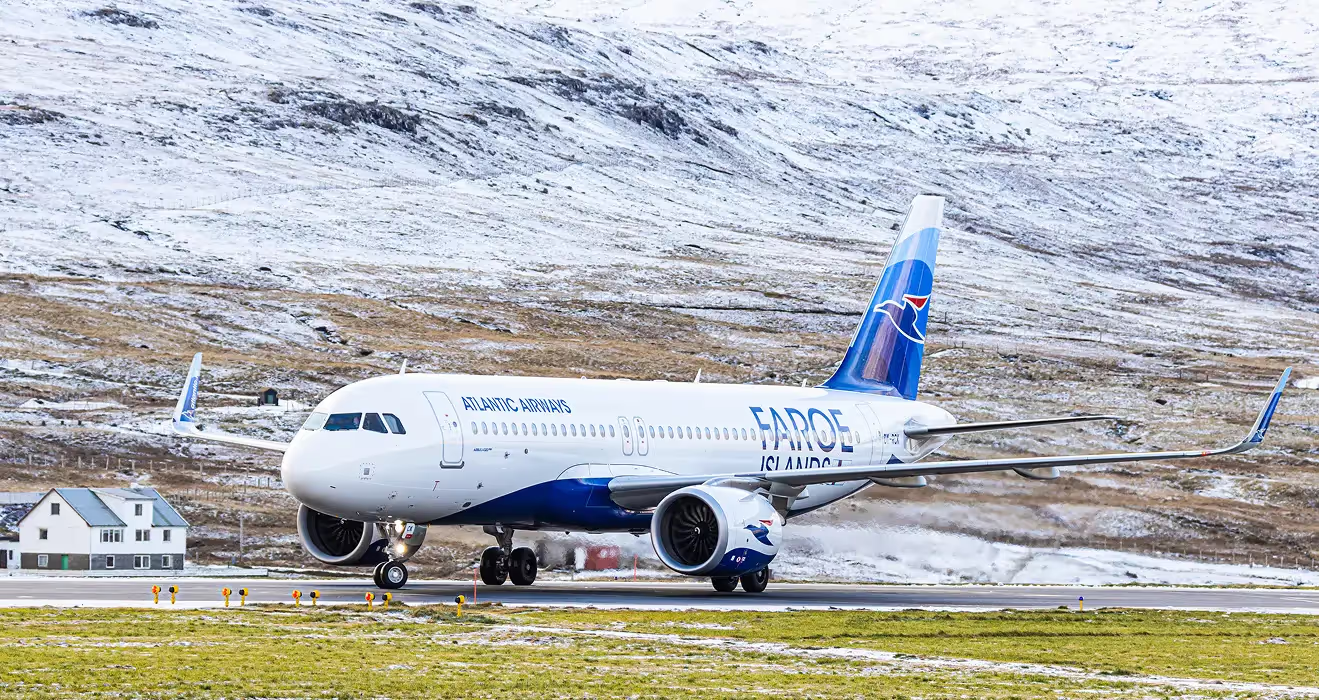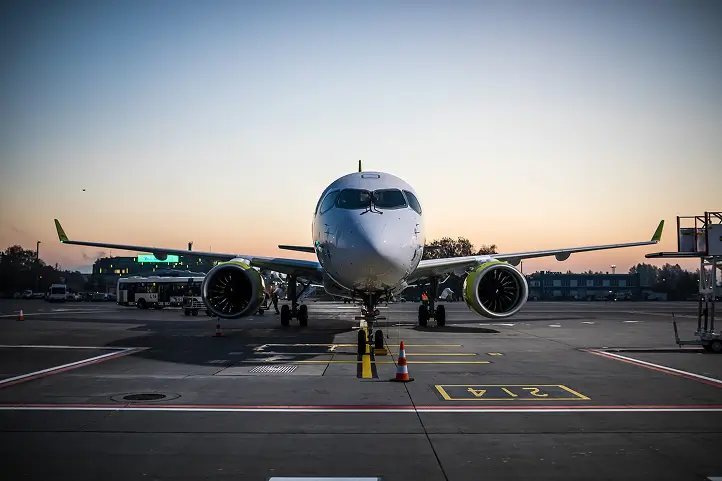Winter airport operations involve coordinated snow removal, runway friction testing, priority area management, and strategic timing to maintain safety while minimising delays. This guide explains how airports handle winter conditions, what happens during runway closures, why some airports perform better than others in snow, and how these factors affect charter operations. Understanding airport winter capabilities helps charter clients plan realistic schedules and set appropriate expectations.
You've already learned about aircraft de-icing and how it affects your charter. But de-icing is only half the winter operations story. The airport itself needs clearing before any aircraft can move.
This guide explains what happens behind the scenes when snow falls, why some airports handle winter better than others, and how these operations affect your charter timing.
The Scale of Airport Snow Removal
Major airports operate fleets of specialised snow removal vehicles. We're not talking about a couple of ploughs. Helsinki Airport, for example, coordinates approximately 130 maintenance professionals during winter operations. Large hub airports might deploy 50+ vehicles simultaneously during significant snowfall.
The equipment varies by task:
High-speed ploughs clear initial snow from runways at speeds up to 65 km/h. Speed matters because it reduces runway closure time.
Sweeper trucks follow behind ploughs, removing remaining snow and debris that ploughs leave behind.
Friction testing vehicles measure runway surface grip after clearing. Aviation authorities require specific friction levels before runways can reopen.
Chemical spreaders apply anti-icing solutions to prevent ice formation on cleared surfaces.
Snow blowers move accumulated snow off airport property when ploughing alone isn't sufficient.
According to research by HEL Airport on winter operations, coordinating these vehicles safely while air traffic control manages arriving and departing aircraft is "like a carefully rehearsed dance routine." Everyone needs to know exactly where equipment will be 75 minutes in advance.
Priority Area Management
Airports don't clear everything simultaneously. They work through priority areas systematically.
Priority 1: Primary runway, parallel taxiways connecting to aprons, essential parking areas, emergency access routes. These get cleared first because they're critical for resuming operations.
Priority 2: Crosswind runways, supporting taxiways, additional aircraft parking. These get addressed once Priority 1 areas are operationally safe.
Priority 3: All remaining surfaces including perimeter roads and secondary areas.
For your charter operations, this means departure timing depends partly on where your aircraft is parked. A jet parked on the main apron area gets cleared access faster than one in a remote parking position.
How Long Does Runway Clearing Take?
This varies enormously based on airport experience, equipment quality, snowfall rate, and temperature conditions.
Experienced winter airports: 15-25 minutes for light to moderate snow. Helsinki, Oslo, Zurich, and similar airports with proper winter infrastructure rarely close runways for more than 20-30 minutes even during active snowfall.
Moderate capability airports: 30-60 minutes depending on conditions. Many Central European airports fall into this category. They handle snow competently but aren't optimised for extreme conditions.
Limited capability airports: Can require 90+ minutes or complete closure until conditions improve. Some UK airports, Mediterranean airports, and southern locations struggle with even modest snowfall because they lack equipment, trained staff, and established procedures.
The difference isn't just equipment. It's also experience and established systems. Northern airports practice winter procedures regularly. Their staff know the choreography. Airports that see snow rarely lack that muscle memory, which makes operations slower and more cautious.
Friction Testing and Safety Standards
After clearing snow, airports must verify the runway surface meets safety standards before reopening. This involves friction testing.
Specialised vehicles drive the cleared runway measuring grip at various points. Aviation authorities set minimum friction coefficients that surfaces must meet. If measurements fall below these thresholds, the runway stays closed or gets restrictions placed on which aircraft types can use it.
Friction depends on several factors:
Temperature around freezing creates the most challenging conditions. Water melts then refreezes, creating invisible ice layers ("black ice") that standard snow removal can miss.
Precipitation type matters significantly. Wet snow packs and creates friction. Dry snow brushes away easily but can hide ice underneath. Freezing rain creates immediate ice that's hardest to manage.
Wind affects how snow accumulates and how quickly cleared surfaces re-contaminate during active precipitation.
All this friction testing takes time. It's not optional, and it can't be rushed. Your charter might be de-iced and ready to go, but if the runway hasn't passed friction testing, nothing moves.
Real-Time Coordination Challenges
Winter operations require constant communication among multiple parties. Air traffic control, airport maintenance, meteorology teams, de-icing contractors, airline operations, and ground handling all need to coordinate actions.
Modern systems like FF-ICE help with this coordination, but winter operations still demand significant human judgment. When should we close the runway for clearing? How long will the current snowfall rate allow us to operate before closure becomes necessary? Which aircraft should we prioritise for departure before closing?
These decisions happen in real-time as conditions develop. Your broker and operator navigate these choices continuously during winter operations, which is why communication becomes so important. That text saying "30-minute delay" might represent dozens of coordination decisions happening simultaneously.
Why Some Airports Excel at Winter Operations
The difference between airports that handle snow brilliantly and those that struggle comes down to three factors: investment, experience, and geography.
Investment in equipment: Proper winter operations require significant capital investment in specialised vehicles and infrastructure. Airports that see snow regularly justify this investment. Airports with occasional snow often rely on general-purpose equipment that's less effective.
Staff experience and training: Winter operations are part of regular procedures at Nordic and Alpine airports. Staff train continuously and practice during the summer. At airports where snow is rare, procedures get dusted off annually and staff lack recent experience.
Geographic considerations: Some airports face unique challenges. Wind patterns, temperature fluctuations, precipitation types, and surrounding terrain all affect snow management. Airports in valleys face different conditions than hilltop airports. Coastal airports deal with different precipitation than inland locations.
When planning group charters during winter, your broker considers these airport capabilities. Sometimes routing through a more snow-capable airport 100 km away makes more sense than your closest option, especially during active weather.
Contingency Planning and Alternatives
Experienced brokers build contingency into winter charter planning. This might involve:
Multiple airport options: Your broker identifies alternate airports with better weather or winter capabilities as backup options.
Timing flexibility: Building buffer time into schedules acknowledges that winter delays are common and planning for them reduces stress when they occur.
Communication protocols: Establishing how you'll receive updates and make decisions if plans need changing.
Cost considerations: Understanding that diversions or alternative routings might involve additional handling charges.
The goal isn't to avoid winter flying. It's to plan realistically for the operational environment that winter creates.
Frequently Asked Questions
Why do some airports close for just 2 inches of snow while others operate normally in heavy snowfall?
Equipment capability, staff experience, and infrastructure investment create these differences. Nordic airports are designed for winter operations. Southern airports optimise for summer efficiency and lack winter capabilities.
How do airports decide when to close runways for clearing?
Multiple factors feed this decision: snowfall rate, forecast duration, aircraft backlog, maintenance vehicle availability, and friction test results. The goal is minimising total operational disruption rather than avoiding closure entirely.
Can charters access airports that close to commercial traffic?
Sometimes. Charter operations have more flexibility in timing and can work around closure windows. However, if an airport closes for safety reasons, it closes for everyone regardless of aircraft type.
What's the difference between runway closure and runway restrictions?
Closures mean no operations. Restrictions mean limited operations. Restrictions might specify aircraft types, weight limits, or operational procedures that are safe in current conditions.
Do cargo operations face the same winter challenges?
Absolutely. Cargo charter operations navigate the same winter airport limitations as passenger charters. Physics doesn't distinguish between freight and passengers when snow is falling.
How far in advance do airports know they'll need winter operations?
Weather forecasting provides general guidance 24-48 hours ahead, but exact timing and intensity become clear only a few hours before snow arrives. This is why winter contingency planning matters more than summer operations.
Working with Winter-Experienced Brokers
At Fliteline, winter operations expertise comes from years of coordinating charters through challenging conditions. We know which airports excel in snow, which struggle, and how to route around developing weather systems.
Our flight support services include continuous weather monitoring, alternative airport assessment, and real-time coordination when conditions change. We've diverted charters to avoid hours of delays, secured priority handling at congested airports, and helped clients reach destinations when commercial operations shut down.
This operational knowledge makes winter charter planning more realistic. We build appropriate buffers, suggest routing alternatives, and communicate proactively about developing conditions. You get honest assessments about what's achievable rather than optimistic promises that don't account for weather realities.
Ready to discuss your winter charter requirements? Contact our team for guidance from brokers who understand winter operations across European and global airports. Or explore our aircraft guide to understand which aircraft options work best for winter conditions.
Get in touch with any questions about your air charter needs



